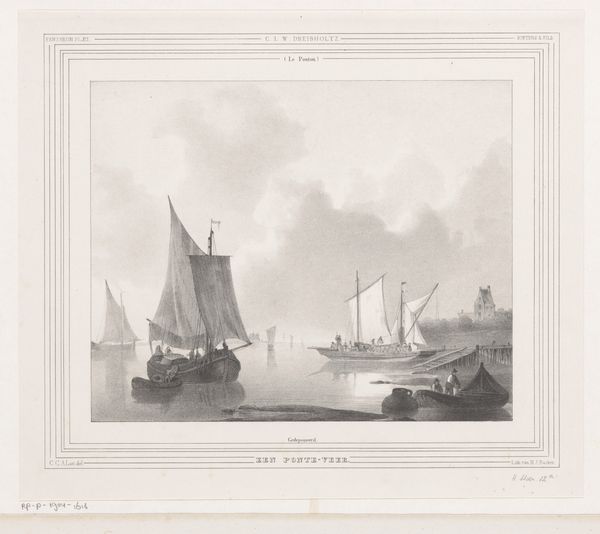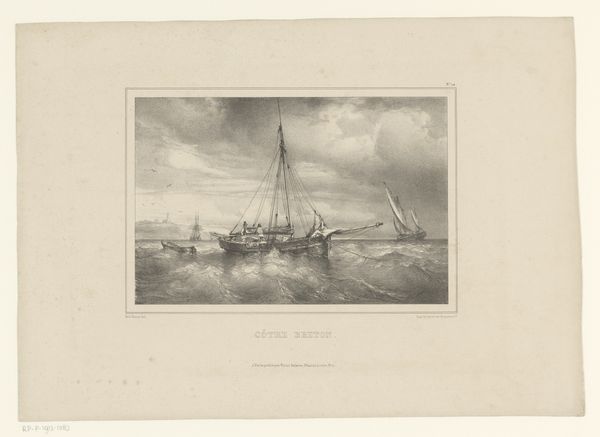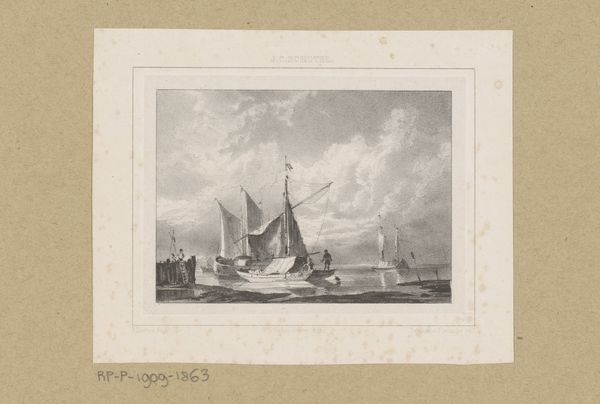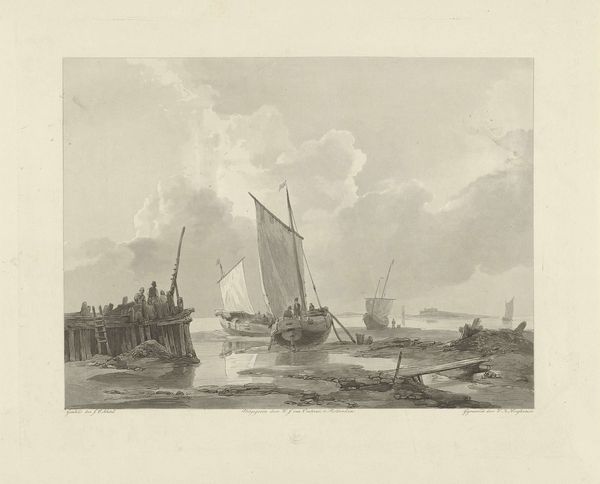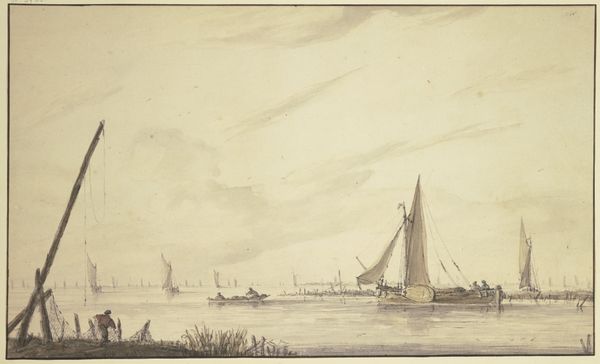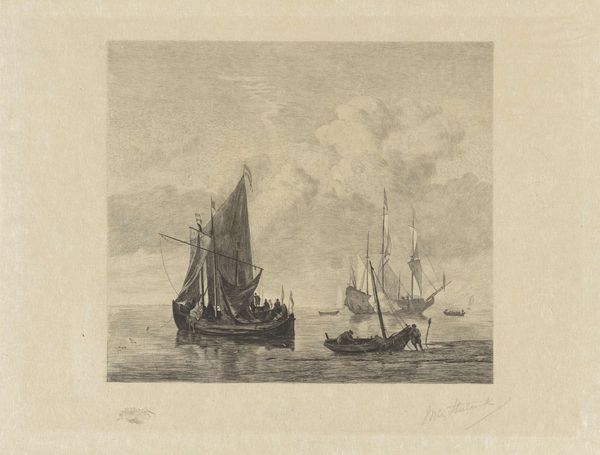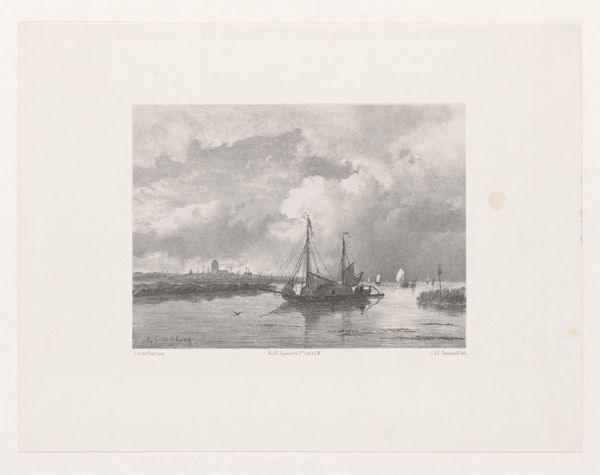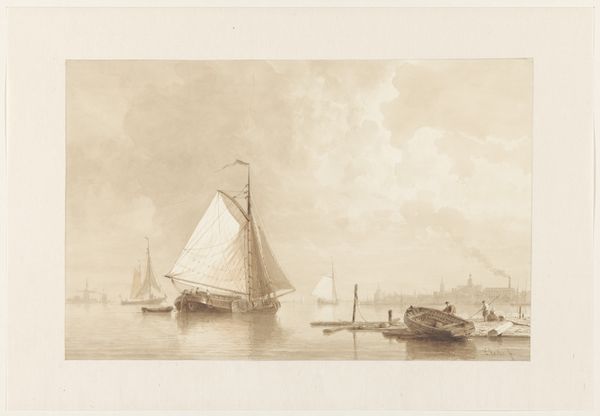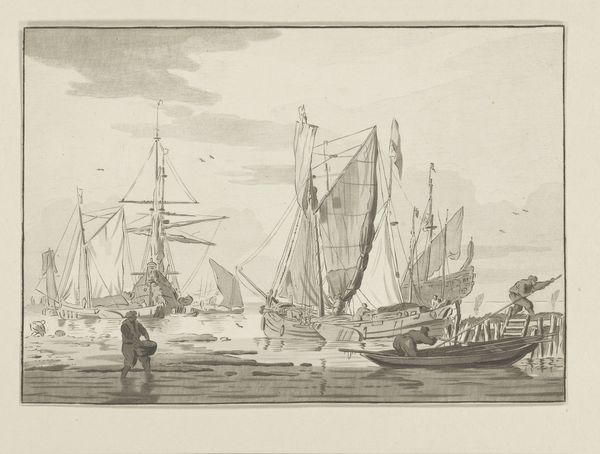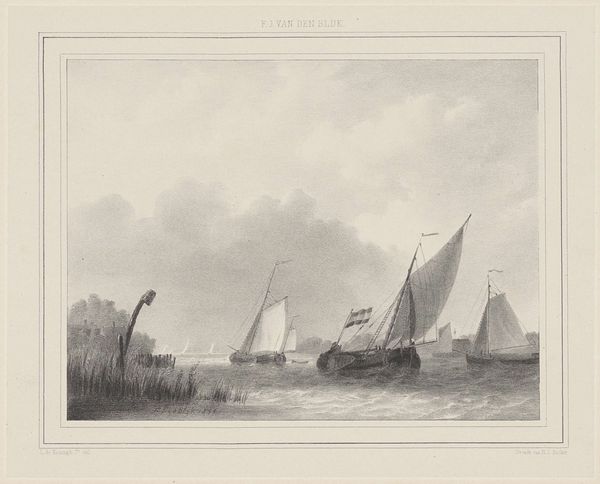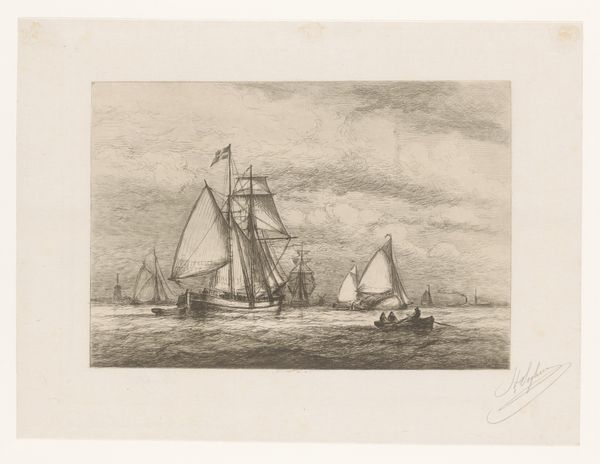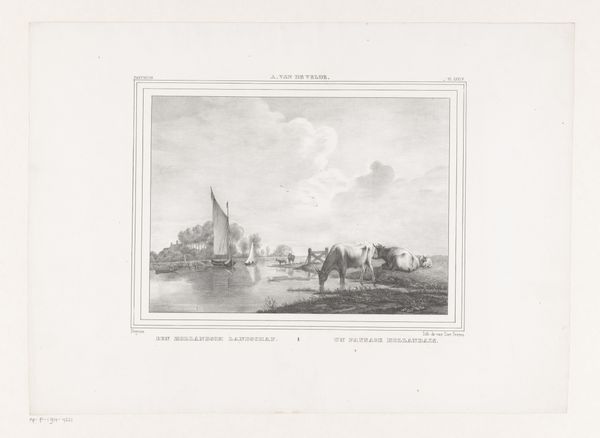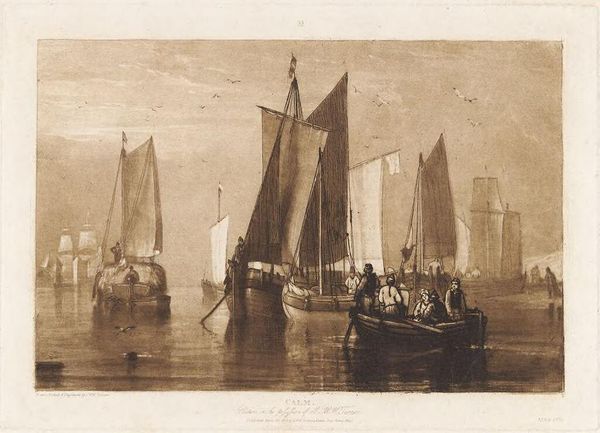
print, graphite, engraving
#
dutch-golden-age
# print
#
landscape
#
graphite
#
cityscape
#
genre-painting
#
graphite
#
engraving
#
realism
Dimensions: height 105 mm, width 150 mm
Copyright: Rijks Museum: Open Domain
Editor: Here we have “Zeilschepen op het water,” or “Sailboats on the Water,” a graphite and engraving print made sometime between 1815 and 1889, currently residing in the Rijksmuseum. It’s attributed to Jan Baptist Tetar van Elven. The light reflecting off the water is really captivating. What aspects of this piece strike you the most? Curator: As a materialist, I am drawn to the engraving process itself. Consider the labor involved in creating the intricate lines that define the sails, the water, and the sky. It's not just about depicting a scene; it's about the means of production. How does the choice of printmaking—a readily reproducible medium—affect its value and accessibility? Editor: That's a perspective I hadn't considered. It makes me think about how prints allowed art to be more widely distributed, almost democratizing access to art. Curator: Exactly. And think about the materials: graphite and the metal plate for engraving. These materials dictated the aesthetic. The limited tonal range inherent in the process shapes our understanding of the subject matter. Are we seeing a literal depiction, or an interpretation filtered through the limitations, and also affordances, of the medium? Also, note that shipbuilding itself was deeply woven into global commerce. Does that social reality reflect into the artwork itself? Editor: I see your point. The materials and process aren't neutral; they carry cultural and economic weight. The artist may be capturing a scene but also unwittingly commenting on labor and the consumption of resources needed for shipbuilding. Curator: Precisely! The beauty is not just in the image, but in unpacking the context surrounding its creation and circulation. What can this piece tell us about the lives of the people who produced the materials, operated the ships, or consumed this art? Editor: This has really changed my perspective. I came in thinking about the picturesque qualities, but now I’m much more aware of how the material reality gives the image meaning. Curator: It’s about looking beyond the surface and tracing the web of connections that give art its weight. I see it as an enriching way of appreciating artistic expression.
Comments
No comments
Be the first to comment and join the conversation on the ultimate creative platform.
